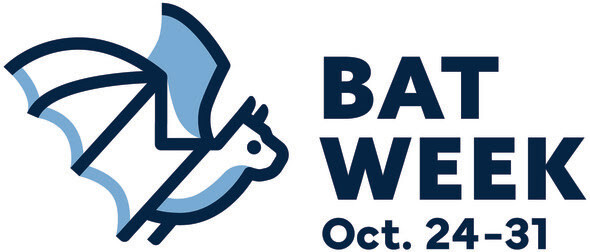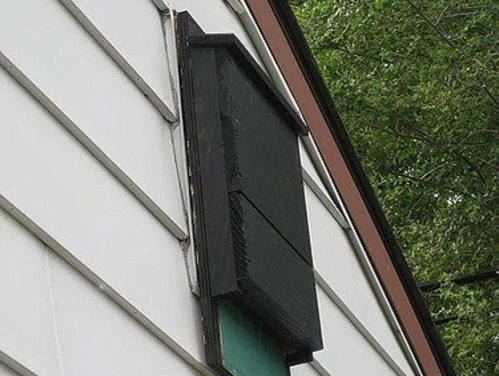October 24 through the 31st is bat week - a week set aside to celebrate our furry flying friends – but here at the DNR every week is bat week. Yes, we are admitting to being a little batty but we’re not ashamed because bats are fascinating, valuable and need our help!
The way we express our fandom for bats is by 1) spying on them relentlessly (aka surveying) to learn more about them and 2) working on managing healthy woodlands which is where most of Iowa’s bats like to hang out.
For Bat Week 2025, we are presenting some of these projects and their results. There are even some opportunities for you to get involved!
Creating Better Bat Habitat
Many of the threats that bats face don't have an easy solution but one place where conservationists and all bat lovers can make a positive difference for bats is by making sure they have good shelter and food.
Most of the nine species of bat in Iowa rely on forests as their primary habitat. Many roost in groups in or on trees but some species are solo roosters that use clumps of leaves to stay hidden. All of our forest-dwelling bats hunt in open corridors in the forest, along the edges and will often utilize waterbodies to find the juicy insects that make up their diet.
A Great Forest for Bats
So what makes a great forest for bats? An ideal forest landscape for bats would be one with:
- A mostly open mid-story: Think uncluttered. Japanese honeysuckle and European Buckthorn, both invasive plants, are the biggest culprits creating cluttered mid-stories.
- Plenty of loose or chunky barked trees: Bats roost in small groups underneath or within the fold of bark. Shagbark Hickories (Carya ovata) and white oaks (Quercus alba) are two great examples of bat friendly trees.
- A few dead trees (aka snags): Especially those with cavities in them. Dead trees tend to have loose bark and hollow cavities make great roost sites for bats.
- Many insects to eat: All of Iowa's bats are insect eaters so it is important to have healthy populations of insects in or near the forest for foraging.
What We're Doing
From 2022 to 2024, thanks to a federal grant and matching state funds, the Iowa DNR was able restore over 800 acres of public and private forest for bats through prescribed fire, invasive species removal and sustainable forest thinning practices like TSI (timber stand improvement).
Outside of projects like this we also make an effort for all of our Forest Stewardship Plans to be bat friendly. Fore example, the plans will include a recommended percent of dead trees that should be left standing and tree removals are scheduled outside of the summer months when bats may be in residence.
Bat friendly forest management done independently by forest owners can make a huge difference for these special flying mammals.
What You Can Do
- Plant Bat Friendly Trees: For example Shagbark Hickory, Shellbark Hickory, White Oak and American elm
- Leave Standing Dead Trees: Only where it is safe for humans and buildings, of course.
- Control Invasive Shrubs in Your Woodland: Common culprits are Japanese Honeysuckle and European Buckthorn.
- Avoid Cutting Trees Down from May-July: This is the timeframe when mothers are giving birth and the young are flightless.
- Have a Cave or Mine on your Property? Avoid disturbing it during the winter.
- Put Up a Bat Box
- Plant Insect Friendly Plants and Avoid Using Insecticides
Hey, But What About the Bats in My Barn/Attic/Eaves etc....
Big Brown Bats and to a lesser extent Little Browns and Northern Long-eareds have adapted to roosting in human buildings. You don't need to "house" them in your home to be a bat ally but you can approach bat removal in an ethical and humane way. This article, "Bats: Damage Management," from ISU Wildlife Extension outlines the process well and if you don't feel up to doing it yourself you can hire a licensed Nuisance Wildlife Control Operator. After the bats have been excluded from your house, they are more likely to move into a house you provide for them so it's a great time to put up a bat box!
Believe it or not, bats make our world a better place!
So, this year I hope you will join us in sending a little love and gratitude their way. Or if love is perhaps a little too far, at least some respect.
Want to dive deeper into #BatWeek? The official batweek.org website has a ton of cool educational resources and activities including a bat-inspired cookbook and instructions on how to make an origami bat!

